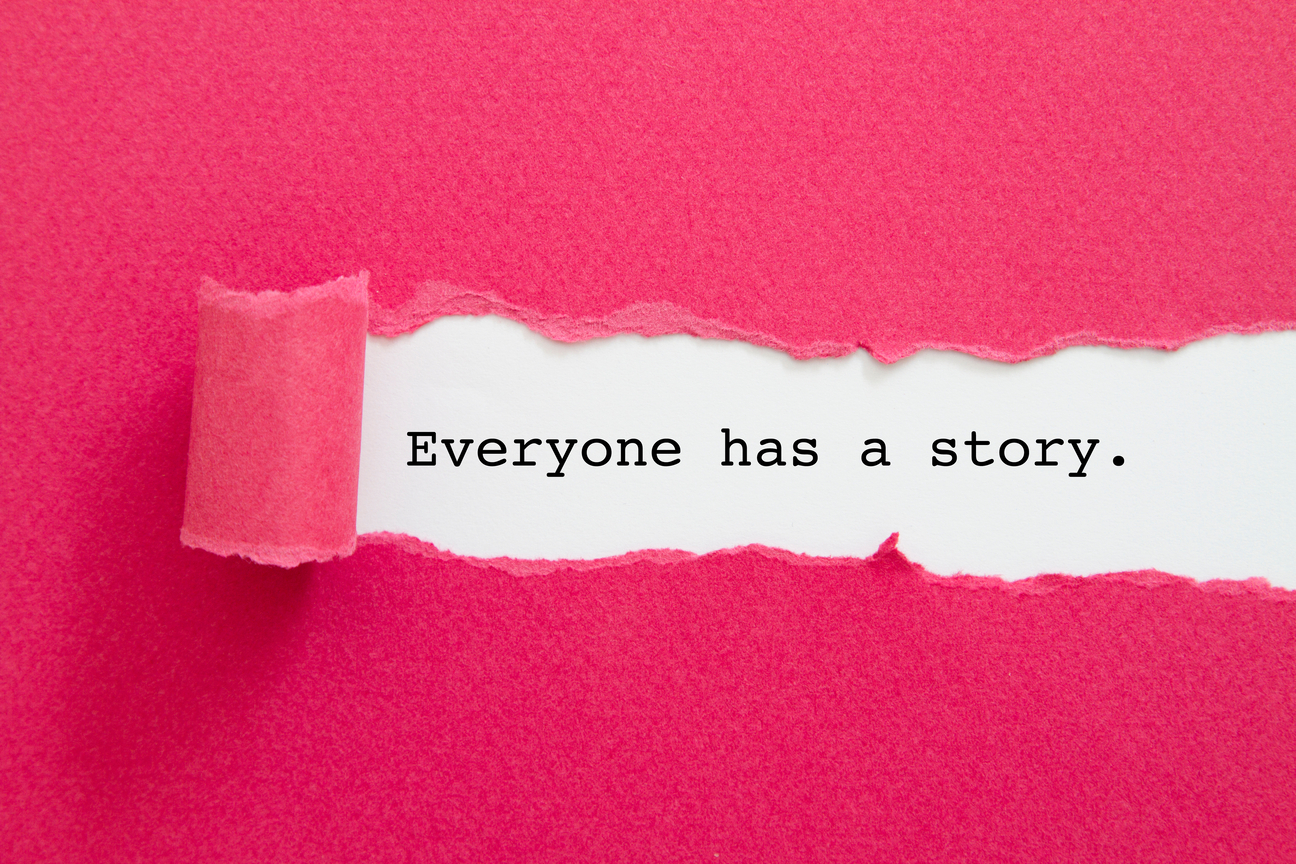Storytelling for impact
Stories are a part of life. From cave paintings and hieroglyphics to TikTok, they help convey culture, forge connections, create commonalities, and social bonds. They also build trust, open people up to learning and make information more accessible and memorable. Not just for children, stories work at every level – including business. As Steve Jobs points out:
“The most powerful person in the world is the storyteller. The storyteller sets the vision, values and agenda of an entire generation.”
The science of storytelling
Why does storytelling have such a strong effect on us? Even if his theory is still debated, American neuroscientist Paul Zak offers an interesting explanation. Paul Zak argues that storytelling – good storytelling – is a catalyst that triggers the release of a hormone called oxytocin (sometimes called the “love” hormone). Oxytocin, he argues, can make us more sensitive to social cues and is a trigger for positive social action (even charitable giving!).
That’s not to say we should use storytelling to manipulate and guilt people into action. Nor do I wish to present this as scientific fact. It’s not. The point – oxytocin or no oxytocin – is that storytelling works. More than just a nice to have, it is a must have – a tool to engage, connect with and inspire donors and supporters.
Sourcing great stories
Stories aren’t always easy to come by, and it can be tempting to simply roll-out the same case study again and again. They soon become tired and dated. For me, there is no excuse. When you start looking for them, stories are everywhere.
Looking for some inspiration? Why not try:
- Connecting with project teams and people on the ground
- Sharing stories of team members, volunteers and your board
- Discovering and sharing the ‘why’ of supporters and ambassadors.
Story production can involve a myriad of media: visual, print or digital materials, audio, audio-visual and interactive content. One of the challenges is the belief that it requires a high production value, a professional film crew, or photographer. That’s great if you’ve got the budget, but there is also lot you can do yourselves – and I honestly believe that there is a genuine value in keeping things real and authentic.
Responsible storytelling
When you’re telling (or should I say, ‘sharing’?) a story, it’s also important consider the person who owns it. Behind every case study, every social media post, and every video clip is a real, lived experience, and it’s important to respect and reflect that. As storytellers, we have a responsibility to always ensure that the story owner knows how their story will be told and shared, and that they are involved in process as much as possible. Consent is not just a form to fill out. It is a continuous process – a foundational part of responsible storytelling that helps to make sure you’re finding and sharing stories in the right way.
Tips and tricks to write great stories
I’ve been working in fundraising communications for over 10 years now, and in this time I’ve written and shared a lot of stories – some, I’ll be honest, better than others. It’s a continuous process and ongoing learning curve, and I’m pleased to share a few tips and tricks I’ve picked up along the way.
- Be inspired: Always keep your eyes open for potential stories, brief your team on what you’re looking for, and trust your instinct when an idea for a story comes along.
- Know your audience: Ask yourself who you want to reach, and why? You should also think, not just about the action you want people to take, but about how you want them to feel when reading your story.
- Discover the story: Take the time to plan your approach, and create space to find and understand the story.
- Be a responsible storyteller: Always remember the person whose story you are telling, and do everything you can to make sure they’re comfortable with the way their story is being shared.
- Develop your content: Storytelling is a creative process, make sure you give it the time and attention it deserves.
- Make it shine: Make sure your angle is clear and different, and make sure to keep your story authentic, human and jargon-free.
And finally, remember, it’s about them – not you. Be faithful to the person whose story you are sharing, take their time to tell their truth and tell it well.
If you want to go further on your storytelling journey, our team at Infinity Communications would be happy to support. Strategy, storytelling, engagement: possibilities are infinite. Contact us to get started.
Author: Jennifer Ruthe, Senior Content Consultant with Infinity Communications








